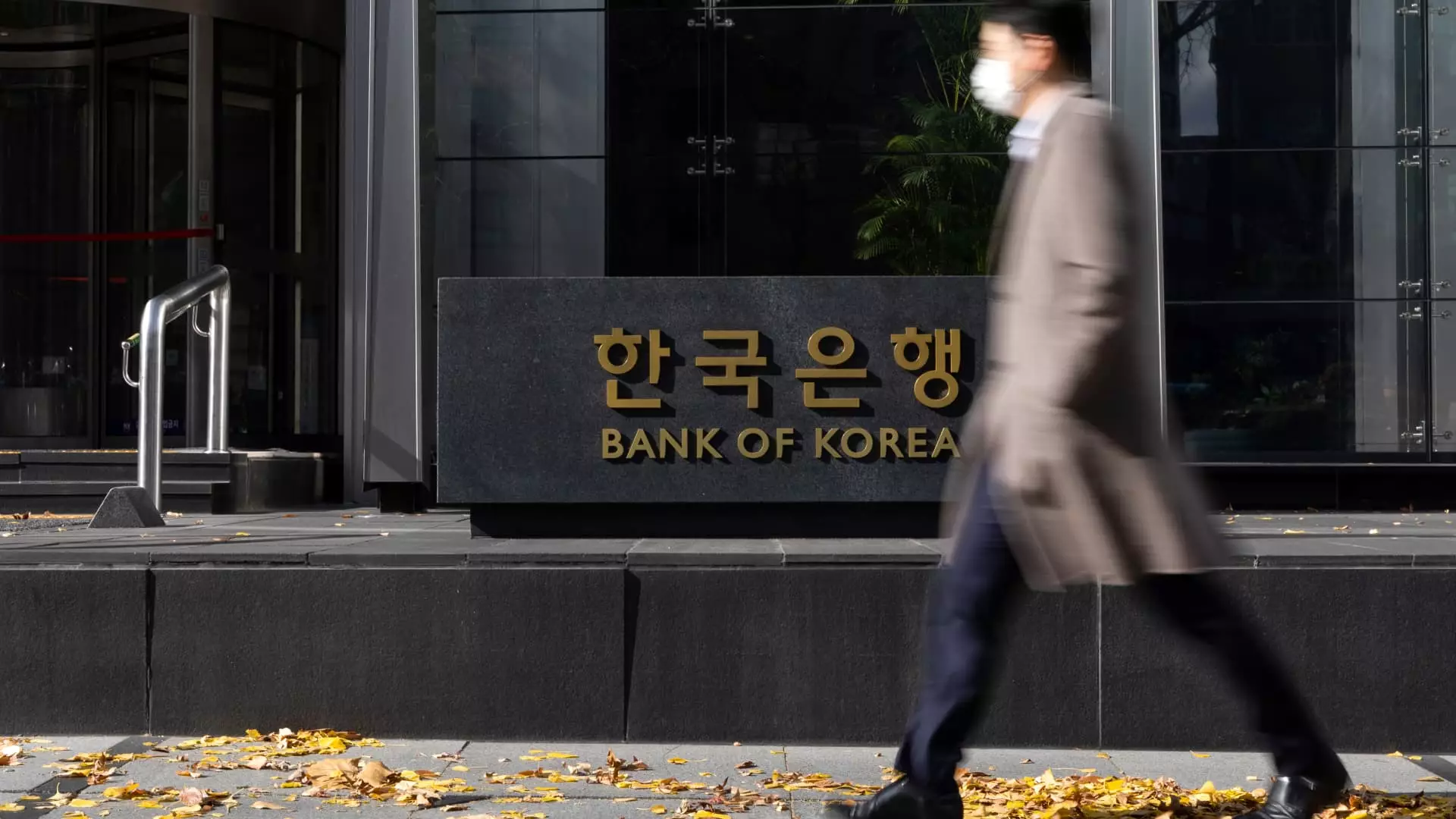On a pivotal Thursday, South Korea’s central bank, the Bank of Korea (BOK), made a notable move by cutting its benchmark interest rate by 25 basis points. This decision not only surprised observers but also marked a significant moment in the country’s economic policy, as it represents the first instance of consecutive rate cuts since 2009. Earlier in October, the BOK had already enacted a similar reduction, making the current environment particularly dynamic. With economists broadly anticipating a pause in rate changes, the 3.25% benchmark was expected to remain steady. However, with growth faltering, the bank opted to take decisive action.
The impetus behind this unexpected move stems from the country’s disappointing economic performance. The recent Gross Domestic Product (GDP) growth rate revealed an expansion of just 1.5% year-on-year, which fell short of the anticipated 2% as forecasted by economists. This underperformance has led the BOK to reassess its growth expectations for 2024, lowering its outlook from 2.4% to 2.2%, indicating a cautious approach going forward. Furthermore, the growth projection for 2025 has also been revised downwards to 1.9%. These adjustments offer a grim picture of South Korea’s economic landscape, compelling the central bank to act in an attempt to reignite growth.
Interestingly, the BOK’s decision follows a period of stabilizing inflation rates, with a significant drop to 1.3% recorded in October, the lowest inflation rate since early 2021. The central bank acknowledged the reduction in inflation; however, it cited increasing downward pressures on the economy as a justification for further cuts. Notably, the South Korean won has been on a downward trajectory, weakening against the U.S. dollar. As of mid-November, the won reached a two-year low, which raises substantial concerns about its impact on imports and the broader economy. Governor Rhee Chang-yong’s comments highlight this dilemma, indicating that the currency’s rapid depreciation is a crucial factor in shaping monetary policy decisions.
Moving forward, the BOK faces a complex landscape filled with trade-offs. The recent rate cuts may provide temporary relief and stimulate economic activity; however, the persistent depreciation of the won poses significant challenges. Economists will be closely monitoring how these developments unfold and the bank’s future stance on interest rates. Governor Rhee has expressed a commitment to navigating these turbulent times; however, with external pressures and internal economic weaknesses at play, the path ahead may not be straightforward.
Ultimately, South Korea’s decision to implement back-to-back interest rate cuts emphasizes the government’s urgent need to address slow economic growth and its willingness to adapt to changing conditions. The coming months will be critical in assessing whether these monetary policy adjustments can fortify the nation’s economy against ongoing uncertainties.


Leave a Reply